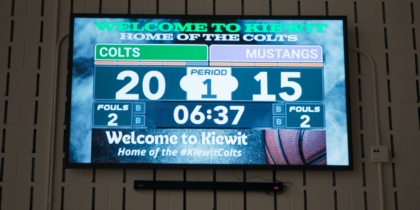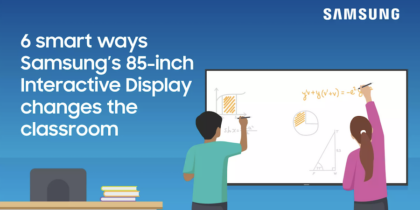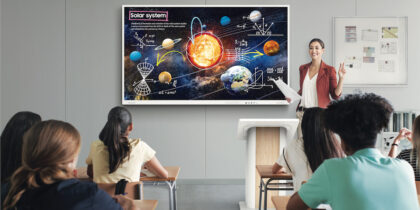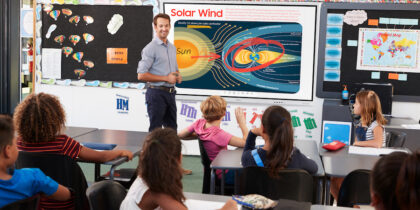The higher-education community was the first to grasp the potential of open source textbooks, which students can legally access online, download and self-print for free, or have printed on demand at low cost.
The K–12 sector has been a bit behind higher education in using open source textbooks and other open educational resources (OER). Some lag may be attributed to complicated and slow-to-change procurement processes, a lack of recognition by district and school board policies of OER as an instructional materials option, and concerns about quality assurance and alignment with state and district learning standards. But there is no doubting the value of OER — which can include complete courses, lessons, videos and simulations — that reside in the public domain or have been released under an open license permitting others to freely use and repurpose them.
The Expansion of OER
As more K–12 teachers, administrators and district leaders become aware of OER, the more eager they are to embrace the model. OER provides opportunities to update and adapt materials to meet different student needs, spurs innovation in open learning practices and reduces content acquisition costs.
“OER brings a huge potential to K–12 for maintaining current content and collaborating within the school district and beyond on continual quality improvement of that content,” says Barbara Soots, instructional materials and open educational resources program manager in the Office of Superintendent of Public Instruction, which oversees K–12 public education in Washington state. On top of that, educators who adopt the model become highly invested in seeing it succeed. “The collaboration on the creation of up-to-date material designed to meet student needs provides an incredible professional learning opportunity and promotes educator ownership in district instructional materials and their effectiveness,” Soots says.
Karen Fasimpaur, educational consultant with K12 Open Ed, an online resource for OER in elementary and secondary education, agrees. Teachers, she says, “understand the need to customize learning for each learner and are eager to collaborate to improve learning.”
To date, there are more OER options for middle and high school courses in mathematics and science, Soots says, but other grades and content areas are increasing in availability. Given that many states have common learning standards in mathematics, science and English language arts, those content areas are especially well-suited for wide-scale sharing of instructional material, she says. The Washington OER Project has reviewed 24 openly licensed math curricula, including open source textbooks, for middle and high school students as well as 60 thematic units for English language arts from contributors such as CK–12, EngageNY, the Mathematics Vision Project and the Utah Middle School Math Project. Open source textbook formats run the gamut from very traditional to incredibly innovative, including highly interactive digital textbooks, says Fasimpaur.
OER also enables educational leaders to shift costs: Instead of using funds to purchase or lease instructional materials, those monies can be directed to fulfill other needs, such as building technology capacity. Openly licensed resources aren’t synonymous with digital resources — many OER programs are designed to be printed and used in that format — but “the best potential for cost-shifting lies in digital distribution,” Soots explains.
To that end, schools and districts may look to technology options for implementing digital OER that include mobile devices, laptops, tablets, Chromebooks, thin clients and desktops; to be used online or offline and implemented through 1:1 programs, BYOD, or combinations of all of the above, says Fasimpaur. “The great thing about OER as opposed to commercial digital content is that the content can be modified and deployed under all of these scenarios and ones we haven’t even thought of yet,” she says.
Benefits Beyond Students
Fasimpaur and Soots emphasize that it’s critical to ensure that all students have equitable home access to OER material, particularly core assets. In addition to open licenses allowing for print delivery of materials, they can accommodate offline deployment of digital textbooks or other resources via family-owned devices, community devices or school-issued ones, Fasimpaur says. “Innovative programs have sent technology home with students and allowed it to be used by others in families as well,” she notes. “There are also exciting options for increasing home Internet access, like Wi-Fi-enabled mobile buses, increased community center access, and school-business partnerships.” Before making a transition to a digital instructional environment, Soots advises a consultation with district educational technology staff regarding the technological impacts of these programs.
Fostering the use of OER in K–12 education will take effort and investment, including providing professional learning for educators to help them make these programs successful. But the payback can be spectacular. “There is the possibility for open practice to allow students to more directly own their own learning in a broader sense,” says Fasimpaur. “Openness in learning can help students to be more collaborative, more proactive and more independent, skills that will benefit all of us beyond just the walls of school.”
Do you have experience using open educational resources in your classroom? Tell us in the comments below!










